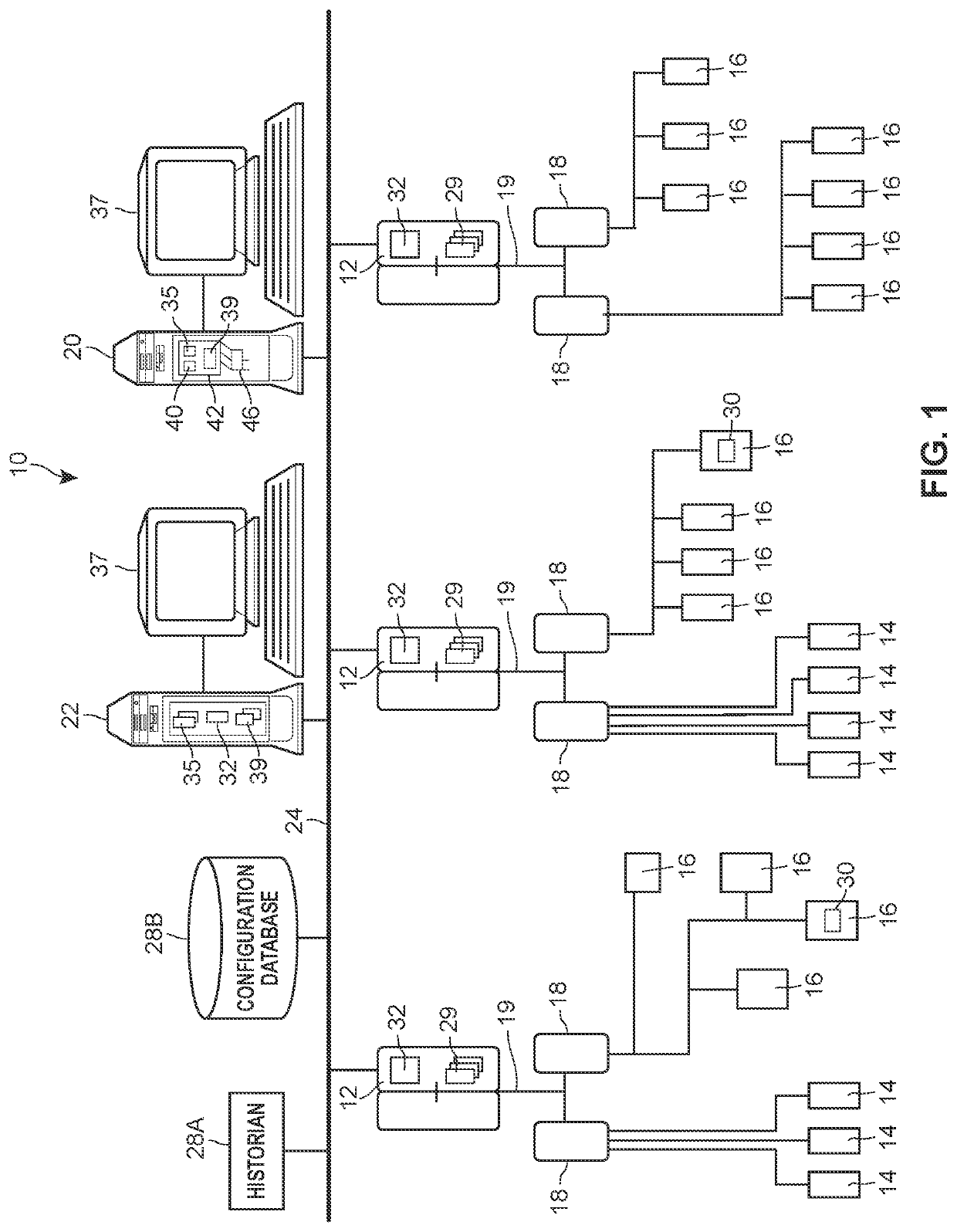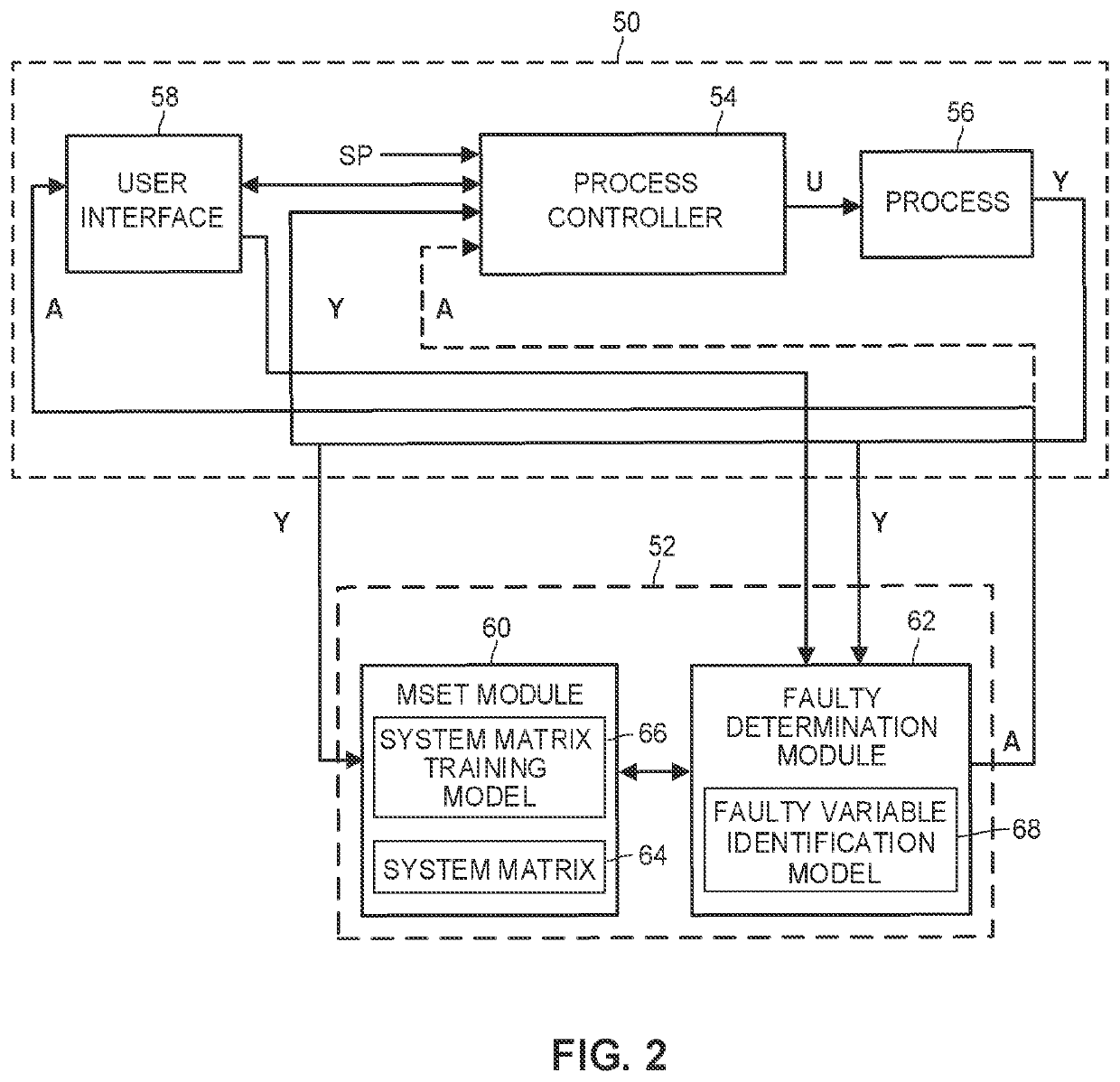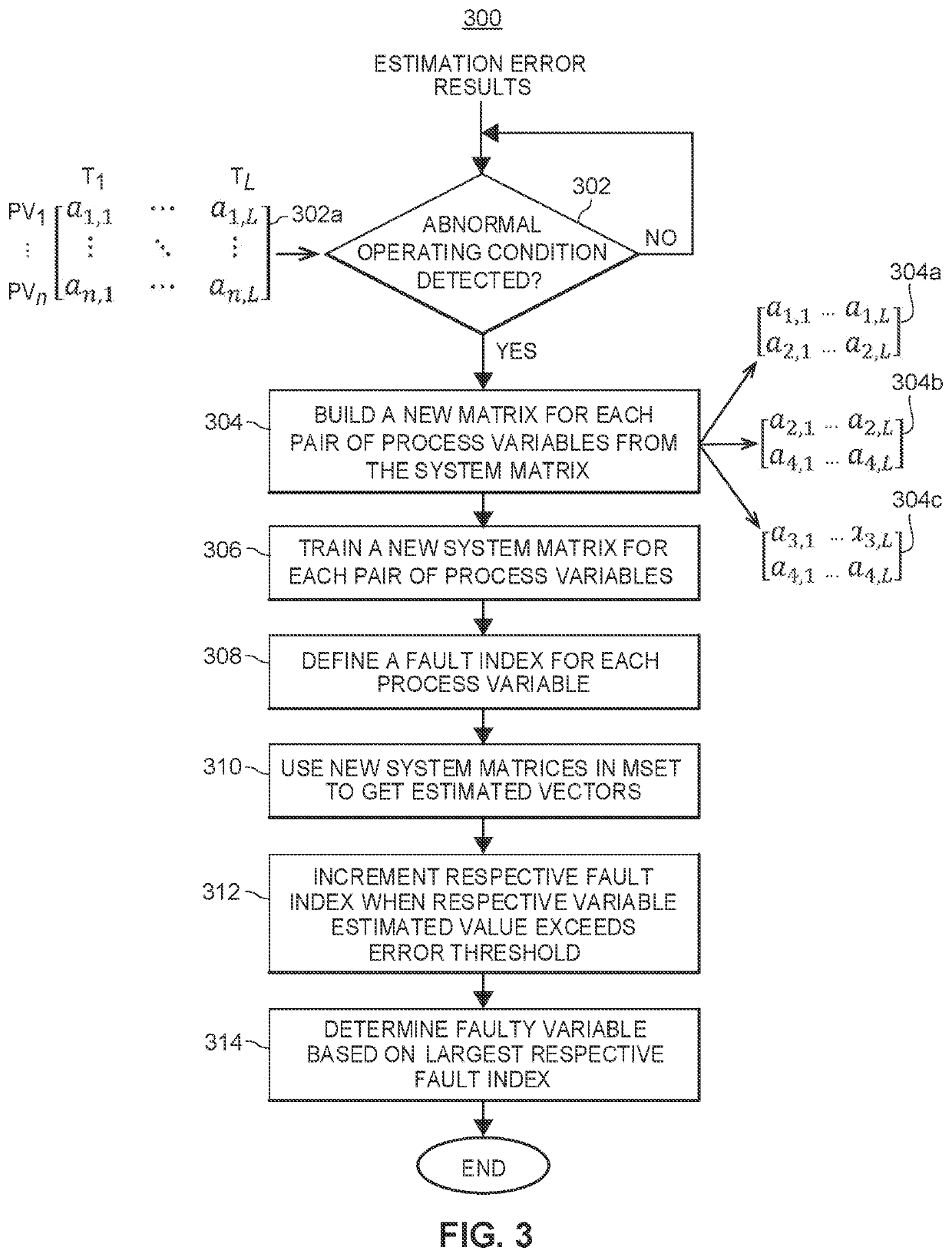At times, however, the
plant may experience an abnormal situation where, for example, one of the expected feedback signals related to the permissives, for example, does not occur in the manner expected.
This situation may result in the sequence program halting or stalling.
Importantly, a sequence stall can result in the halt of equipment, which can result in manufacturing delays, lost production or revenue, higher operating costs and possibly even equipment damage.
In a traditional
control system however, the operator may not be aware of an impending abnormal situation, and the resulting sequence stall, until the situation actually occurs and the sequence is halted.
A primary contributor to operator unawareness, and thus the development of sequence-stalling events, is the sheer complexity of the systems involved
in process control.
However, such monitoring techniques are not complete because the techniques ignore correlations that exist between and among the various parameters of the system.
Unfortunately, power plants and other environments implementing
process control systems are generally not a set of small closed systems where each pair of process variables only
impact one another.
As a result, creating a set of one-to-one relationships for process variables, similar to that illustrated in the fictional system above (e.g., pressure-to-temperature), may not adequately describe the correlations between and among the process variables.
Often, the process
control system issues parameter-specific alarms if any of the parameters violates these predefined limits.
Thus, movement of one significant process parameter without corresponding changes in other process parameters can be a precursor to component failure, process drift, or more immediately, a sequence stall.
However, if the fault detection system determines that the on-line data substantially deviates from the estimated data, the fault detection system determines that the on-line data represents an “abnormal” operating condition of the process.
Unfortunately, the
estimation error associated with the faulty variable(s) propagates to the “normal” process variables as a result of the relationships between the process variables encapsulated in the
system matrix of the MSET, and may cause conventional fault detection systems to erroneously identify the “normal” process variables as faulty variables.
However, the minimal distance is usually measured in vector's Euclidian norm, which does not always consider the approximation of each individual vector component in comparison.
The faulty variable(s) typically yield the largest
estimation error, which generally indicates the process variables causing the “abnormal” operating condition of the process
plant.
However, “normal” process variables may occasionally yield the largest
estimation error due to the propagated estimation error from the faulty variable(s), and as a result, many conventional fault detection systems may erroneously identify the “normal” process variables as faulty variables.
While many fault detection systems have been proposed and used in process plants, only the most complex fault detection systems are typically able to perform
high fidelity verification of the
process operation because of the ever-changing conditions within a process plant, including the degradation of devices over time, the presence of unaccounted for disturbance variables within the plant, etc.
Moreover, in many known process control systems, it can be difficult to identify “abnormal” operating conditions and the corresponding faulty variables because of the large number of process control variables and their complex set of relationships.
As mentioned, faulty variable identification is further complicated because existing fault detection systems are configured to identify the faulty variable(s) based on the estimation error magnitude, which is not an accurate metric in every circumstance.
As a result, most conventional fault detection systems that use a MSET are unable to accurately identify faulty variable measurements.
The improved technique may determine that the number of process variables included in the initial
system matrix exceeds a threshold value that would cause the construction of miniature system matrices for each respective pair of process variables to consume too many
processing resources.
 Login to View More
Login to View More  Login to View More
Login to View More 


